
Just a few short months ago, the University of Kentucky relieved Joker Phillips of his head coaching duties after a season of despair and dysfunction. After a few weeks of rumor and hysteria, Florida State Defensive Coordinator, Mark Stoops, was brought in to fix the
photoshops mess that Joker left behind. Given Stoops' defensive coaching and recruiting prowess, it was a no-brainer for Mitch Barnhart to bring in Stoops as Kentucky's newest head man. However, fans (and Stoops) wanted more. Therefore,
the call was made to Texas Tech Offensive Coordinator, Neal Brown, to come home to Kentucky. He accepted and brought his exciting and effective Air Raid system with him. While most Kentucky fans are familiar with the Air Raid system due to Hal Mumme and Mike Leach's teams in the late 90's, we know little about Brown. Because of this, I took it upon myself to watch every available Texas Tech game from last season to see what makes his offense tick.
Nine full games and 557 offensive plays later (no field goals, kicks, or punts), here's how his offense operates.


As is common with the Air Raid system, a vast majority of plays are run out of the shotgun formation, and Brown's version is no different.
Of 557 plays viewed, 77.6% were run out of some variation of the shotgun formation. The most common were Shotgun Spread and Shotgun Trips. In Shotgun Spread, there are two wide receivers on both sides of the field and one running back on either side of the quarterback. In Shotgun Trips, three wide receivers line-up on one side of the field with one receiver on the opposite side. Like its spread counterpart, a running back aligns on either the left or right of the quarterback. Of course, there are slightly different variations of these formations like Shotgun Trips Y-Flex or Shotgun Spread Y-Slot, but in the most basic terms, these are Brown's favorite shotgun alignments. They
can be viewed here.
In Brown's offense, 19.5% of the 557 viewed plays were run from the Pistol formation. In this alignment,
the quarterback lines-up about 3-4 yards behind center with a running back 3-4 yards behind him. In reality, it's just a slightly modified shotgun formation, but it has its advantages. The main advantage is the quarterback being able to see more of the field. Much like Brown's shotgun formations, his Pistol formations align similarly. In Pistol Spread, there are two receivers on both sides of the field with a running back behind the quarterback. In Pistol Trips, three receivers align on one side with one receiver on the other. Again, a running back aligns behind the quarterback. While this formation is still used to pass,
Brown uses the Pistol to rush at a higher rate. Of the 113 observed plays run out of the Pistol, Texas Tech rushed 49.1% of the time. Sometimes two running backs are on either side of the quarterback, and other times three set up on all sides of the quarterback. This sets up multiple rushing looks and even the wildly popular zone read.
The final scheme Brown uses is the Wildcat formation. If you're unfamiliar,
the Wildcat involves a running back taking the snap in the shotgun. Often times it involves a wide receiver coming into motion near the running back giving the defense another aspect to plan for. Last year,
Texas Tech often used this formation in short yardage situations to catch the defense off balance, and it generally worked for that purpose. However, of the 17 plays that I viewed out of this formation, the Red Raiders ran the ball 100% of the time. While this is barely a cause for concern due to how little the formation was used, it's concerning that a defense will know the rush is coming 100% of the time. The very logical counterpoint to that agrument would be you don't want your running back passing anyway, but at least implement fear with one or two attempts.
Now that we know the primary formations, how is the Air Raid executed when it comes to the passing game? As it turns out, very well. To measure this, I created a new way to scout the passing game similar to a basketball shot chart.
I've divided the field into eight zones to not only determine where the ball was being thrown, but how effective a team was throwing into that zone. The image below shows how the field is divided up when the line of scrimmage is on the 30-yard line (moving left-to-right).

Since teams often pass behind the line of scrimmage on screens, Zones 1 and 2 were created. Zones 3-5 were developed to evaluate passes thrown up to 10 yards beyond the line of scrimmage. Finally, Zones 6-8 were developed to evaluate the passing game beyond ten yards from scrimmage. More zones may need to be added in the future, perhaps 10-20 yards from scrimmage, but for now, this is the best tool at our disposal. If you're having trouble understanding, here's an example.
If a team snaps the ball at the 30-yard line and throws 5 yards beyond the line of scrimmage to the right portion of the field, it would be scored as Zone 5. It has nothing to do with where the receiver finishes, only where he catches the ball. The below chart contains Texas Tech's completion percentage, yards per attempt, and target rate for each zone last season.

As you can see, Brown's Texas Tech offense had a very balanced passing game as they targeted nearly every portion of the field around equally. While it's true that the Air Raid system utilizes short passes to somewhat replace the running game,
Brown's offense takes plenty of shots down the field as well. However, this type of deep passing game was somewhat due to the experience of then Senior Quarterback, Seth Doege. Doege, now with the Falcons, had multiple years of experience in Brown's system, leading him to become the stand-out player he was during his final college season. It's unlikely that Maxwell Smith, Patrick Towles, or Jalen Whitlow can step up and immediately produce in this system given the talent surrounding them, but when the talent arrives, the numbers will too.
Judging from the information presented, it looks as though Kentucky got the best guy available for the Offensive Coordinator position in Neal Brown. His teams mix up formations, spread the field, and most importantly, are efficient in doing so. This upcoming season may not be an explosive offensive year due to the schedule and returning talent pool, but it's going to be fun watching quarterbacks sling the ball around from the shotgun formation, which brings me to my final point. As you can see from the first two images, of the 557 offensive plays I observed, only three formations were used; Shotgun, Pistol, and Wildcat. Naturally,
this means that absolutely zero plays were run with the quarterback taking a snap under center. Zero. How deep is Brown's commitment to not taking snaps under center? Deeper than your commitment to absolutely anything. For proof, here's a link to Texas Tech's 2011 upset win over Oklahoma. The Red Raiders possessed the ball with 28 seconds remaining while leading 41-38. Typically a team lines up under center and snaps the ball for the final knee, but not Neal Brown, no sir.
The Red Raiders took the final knee the only way they knew how, in shotgun formation. Just a few short months ago, the University of Kentucky relieved Joker Phillips of his head coaching duties after a season of despair and dysfunction. After a few weeks of rumor and hysteria, Florida State Defensive Coordinator, Mark Stoops, was brought in to fix the
Just a few short months ago, the University of Kentucky relieved Joker Phillips of his head coaching duties after a season of despair and dysfunction. After a few weeks of rumor and hysteria, Florida State Defensive Coordinator, Mark Stoops, was brought in to fix the 
 As is common with the Air Raid system, a vast majority of plays are run out of the shotgun formation, and Brown's version is no different. Of 557 plays viewed, 77.6% were run out of some variation of the shotgun formation. The most common were Shotgun Spread and Shotgun Trips. In Shotgun Spread, there are two wide receivers on both sides of the field and one running back on either side of the quarterback. In Shotgun Trips, three wide receivers line-up on one side of the field with one receiver on the opposite side. Like its spread counterpart, a running back aligns on either the left or right of the quarterback. Of course, there are slightly different variations of these formations like Shotgun Trips Y-Flex or Shotgun Spread Y-Slot, but in the most basic terms, these are Brown's favorite shotgun alignments. They can be viewed here.
In Brown's offense, 19.5% of the 557 viewed plays were run from the Pistol formation. In this alignment, the quarterback lines-up about 3-4 yards behind center with a running back 3-4 yards behind him. In reality, it's just a slightly modified shotgun formation, but it has its advantages. The main advantage is the quarterback being able to see more of the field. Much like Brown's shotgun formations, his Pistol formations align similarly. In Pistol Spread, there are two receivers on both sides of the field with a running back behind the quarterback. In Pistol Trips, three receivers align on one side with one receiver on the other. Again, a running back aligns behind the quarterback. While this formation is still used to pass, Brown uses the Pistol to rush at a higher rate. Of the 113 observed plays run out of the Pistol, Texas Tech rushed 49.1% of the time. Sometimes two running backs are on either side of the quarterback, and other times three set up on all sides of the quarterback. This sets up multiple rushing looks and even the wildly popular zone read.
The final scheme Brown uses is the Wildcat formation. If you're unfamiliar, the Wildcat involves a running back taking the snap in the shotgun. Often times it involves a wide receiver coming into motion near the running back giving the defense another aspect to plan for. Last year, Texas Tech often used this formation in short yardage situations to catch the defense off balance, and it generally worked for that purpose. However, of the 17 plays that I viewed out of this formation, the Red Raiders ran the ball 100% of the time. While this is barely a cause for concern due to how little the formation was used, it's concerning that a defense will know the rush is coming 100% of the time. The very logical counterpoint to that agrument would be you don't want your running back passing anyway, but at least implement fear with one or two attempts.
Now that we know the primary formations, how is the Air Raid executed when it comes to the passing game? As it turns out, very well. To measure this, I created a new way to scout the passing game similar to a basketball shot chart. I've divided the field into eight zones to not only determine where the ball was being thrown, but how effective a team was throwing into that zone. The image below shows how the field is divided up when the line of scrimmage is on the 30-yard line (moving left-to-right).
As is common with the Air Raid system, a vast majority of plays are run out of the shotgun formation, and Brown's version is no different. Of 557 plays viewed, 77.6% were run out of some variation of the shotgun formation. The most common were Shotgun Spread and Shotgun Trips. In Shotgun Spread, there are two wide receivers on both sides of the field and one running back on either side of the quarterback. In Shotgun Trips, three wide receivers line-up on one side of the field with one receiver on the opposite side. Like its spread counterpart, a running back aligns on either the left or right of the quarterback. Of course, there are slightly different variations of these formations like Shotgun Trips Y-Flex or Shotgun Spread Y-Slot, but in the most basic terms, these are Brown's favorite shotgun alignments. They can be viewed here.
In Brown's offense, 19.5% of the 557 viewed plays were run from the Pistol formation. In this alignment, the quarterback lines-up about 3-4 yards behind center with a running back 3-4 yards behind him. In reality, it's just a slightly modified shotgun formation, but it has its advantages. The main advantage is the quarterback being able to see more of the field. Much like Brown's shotgun formations, his Pistol formations align similarly. In Pistol Spread, there are two receivers on both sides of the field with a running back behind the quarterback. In Pistol Trips, three receivers align on one side with one receiver on the other. Again, a running back aligns behind the quarterback. While this formation is still used to pass, Brown uses the Pistol to rush at a higher rate. Of the 113 observed plays run out of the Pistol, Texas Tech rushed 49.1% of the time. Sometimes two running backs are on either side of the quarterback, and other times three set up on all sides of the quarterback. This sets up multiple rushing looks and even the wildly popular zone read.
The final scheme Brown uses is the Wildcat formation. If you're unfamiliar, the Wildcat involves a running back taking the snap in the shotgun. Often times it involves a wide receiver coming into motion near the running back giving the defense another aspect to plan for. Last year, Texas Tech often used this formation in short yardage situations to catch the defense off balance, and it generally worked for that purpose. However, of the 17 plays that I viewed out of this formation, the Red Raiders ran the ball 100% of the time. While this is barely a cause for concern due to how little the formation was used, it's concerning that a defense will know the rush is coming 100% of the time. The very logical counterpoint to that agrument would be you don't want your running back passing anyway, but at least implement fear with one or two attempts.
Now that we know the primary formations, how is the Air Raid executed when it comes to the passing game? As it turns out, very well. To measure this, I created a new way to scout the passing game similar to a basketball shot chart. I've divided the field into eight zones to not only determine where the ball was being thrown, but how effective a team was throwing into that zone. The image below shows how the field is divided up when the line of scrimmage is on the 30-yard line (moving left-to-right).
 Since teams often pass behind the line of scrimmage on screens, Zones 1 and 2 were created. Zones 3-5 were developed to evaluate passes thrown up to 10 yards beyond the line of scrimmage. Finally, Zones 6-8 were developed to evaluate the passing game beyond ten yards from scrimmage. More zones may need to be added in the future, perhaps 10-20 yards from scrimmage, but for now, this is the best tool at our disposal. If you're having trouble understanding, here's an example. If a team snaps the ball at the 30-yard line and throws 5 yards beyond the line of scrimmage to the right portion of the field, it would be scored as Zone 5. It has nothing to do with where the receiver finishes, only where he catches the ball. The below chart contains Texas Tech's completion percentage, yards per attempt, and target rate for each zone last season.
Since teams often pass behind the line of scrimmage on screens, Zones 1 and 2 were created. Zones 3-5 were developed to evaluate passes thrown up to 10 yards beyond the line of scrimmage. Finally, Zones 6-8 were developed to evaluate the passing game beyond ten yards from scrimmage. More zones may need to be added in the future, perhaps 10-20 yards from scrimmage, but for now, this is the best tool at our disposal. If you're having trouble understanding, here's an example. If a team snaps the ball at the 30-yard line and throws 5 yards beyond the line of scrimmage to the right portion of the field, it would be scored as Zone 5. It has nothing to do with where the receiver finishes, only where he catches the ball. The below chart contains Texas Tech's completion percentage, yards per attempt, and target rate for each zone last season.
 As you can see, Brown's Texas Tech offense had a very balanced passing game as they targeted nearly every portion of the field around equally. While it's true that the Air Raid system utilizes short passes to somewhat replace the running game, Brown's offense takes plenty of shots down the field as well. However, this type of deep passing game was somewhat due to the experience of then Senior Quarterback, Seth Doege. Doege, now with the Falcons, had multiple years of experience in Brown's system, leading him to become the stand-out player he was during his final college season. It's unlikely that Maxwell Smith, Patrick Towles, or Jalen Whitlow can step up and immediately produce in this system given the talent surrounding them, but when the talent arrives, the numbers will too.
Judging from the information presented, it looks as though Kentucky got the best guy available for the Offensive Coordinator position in Neal Brown. His teams mix up formations, spread the field, and most importantly, are efficient in doing so. This upcoming season may not be an explosive offensive year due to the schedule and returning talent pool, but it's going to be fun watching quarterbacks sling the ball around from the shotgun formation, which brings me to my final point. As you can see from the first two images, of the 557 offensive plays I observed, only three formations were used; Shotgun, Pistol, and Wildcat. Naturally, this means that absolutely zero plays were run with the quarterback taking a snap under center. Zero. How deep is Brown's commitment to not taking snaps under center? Deeper than your commitment to absolutely anything. For proof, here's a link to Texas Tech's 2011 upset win over Oklahoma. The Red Raiders possessed the ball with 28 seconds remaining while leading 41-38. Typically a team lines up under center and snaps the ball for the final knee, but not Neal Brown, no sir. The Red Raiders took the final knee the only way they knew how, in shotgun formation.
As you can see, Brown's Texas Tech offense had a very balanced passing game as they targeted nearly every portion of the field around equally. While it's true that the Air Raid system utilizes short passes to somewhat replace the running game, Brown's offense takes plenty of shots down the field as well. However, this type of deep passing game was somewhat due to the experience of then Senior Quarterback, Seth Doege. Doege, now with the Falcons, had multiple years of experience in Brown's system, leading him to become the stand-out player he was during his final college season. It's unlikely that Maxwell Smith, Patrick Towles, or Jalen Whitlow can step up and immediately produce in this system given the talent surrounding them, but when the talent arrives, the numbers will too.
Judging from the information presented, it looks as though Kentucky got the best guy available for the Offensive Coordinator position in Neal Brown. His teams mix up formations, spread the field, and most importantly, are efficient in doing so. This upcoming season may not be an explosive offensive year due to the schedule and returning talent pool, but it's going to be fun watching quarterbacks sling the ball around from the shotgun formation, which brings me to my final point. As you can see from the first two images, of the 557 offensive plays I observed, only three formations were used; Shotgun, Pistol, and Wildcat. Naturally, this means that absolutely zero plays were run with the quarterback taking a snap under center. Zero. How deep is Brown's commitment to not taking snaps under center? Deeper than your commitment to absolutely anything. For proof, here's a link to Texas Tech's 2011 upset win over Oklahoma. The Red Raiders possessed the ball with 28 seconds remaining while leading 41-38. Typically a team lines up under center and snaps the ball for the final knee, but not Neal Brown, no sir. The Red Raiders took the final knee the only way they knew how, in shotgun formation.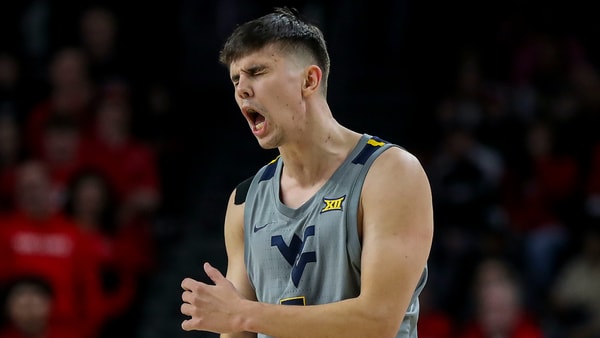
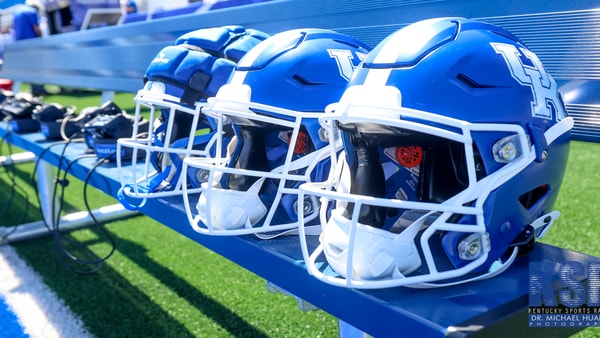
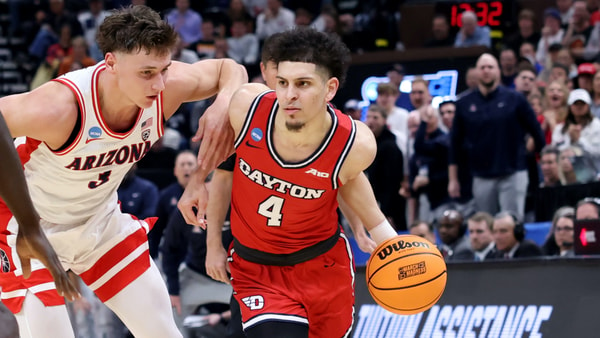
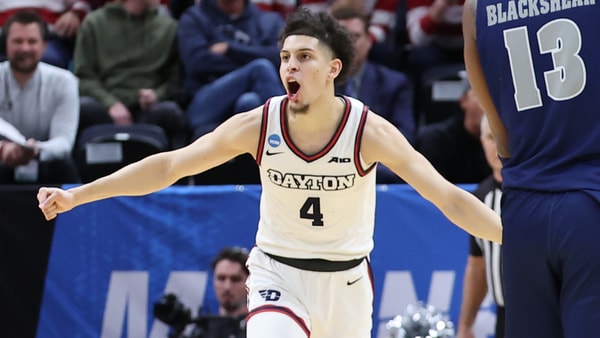
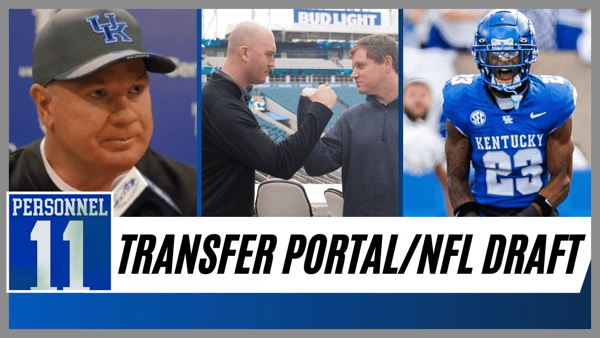



Discuss This Article
Comments have moved.
Join the conversation and talk about this article and all things Kentucky Sports in the new KSR Message Board.
KSBoard